Chapter 2 Reform Characteristics And Observations Very Short Answer Type Questions
Question 1: Who was the editor of ‘The Bengal Gazette’?
Answer:
James Augustus Hicky was the editor of ‘The Bengal Gazette’.
Question 2: Name one satirical prose written by Kaliprasanna Singha.?
Answer:
One satirical prose by Kaliprasanna Singha was ‘Hutom Pyanchar Naksha’.
Question 3: Who composed ‘Hutom Pyanchar Naksha’?
Answer:
Kaliprasanna Singha composed ‘Hutom Pyanchar Naksha’.
Read and Learn More WBBSE Class 10 History Very Short Answer Questions
Wbbse History And Environment Class 10 Solutions
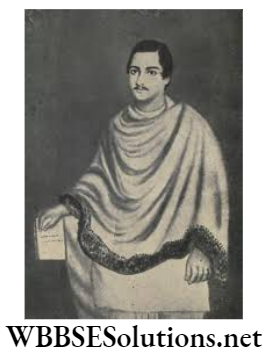
Question 4: Name one English week that exposed the oppression of indigo planters.?
Answer:
One English week which exposed the oppression of indigo planters was the ‘Hindoo Patriot’.
Question 5: Name one Bengali periodical of colonial Bengal with a strong emphasis on women’s issues.?
Answer:
One Bengali periodical of colonial Bengal with a strong emphasis on women’s issues was ‘Bamabodhini Patrika’.
Question 6: In which year was ‘Bamabodhini Patrika’ first published?
Answer:
‘Bamabodhini Patrika’ was first published in 1863.
Question 7: In which year was ‘Grambarta Prakashika’ first published?
Answer:
‘Grambarta Prakashika’ was first published in 1863.
Question 8: Which was the first Bengali literary work that portrayed a satirical picture of society?
Answer:
A ‘Hutom Pyanchar Naksha’ by Kaliprasanna Singha was the first literary work in Bengali that portrayed a satirical picture of society.
Question 9: Who was the editor of ‘Hindoo Patriot’?
Answer:
Harish Chandra Mukherjee was the editor of the ‘Hindoo Patriot’.
Question 10: Who was the editor of ‘Amrita Bazar Patrika’?
Answer:
Sisir Kumar Ghosh was the editor of ‘Amrita Bazar Patrika’.
Wbbse History And Environment Class 10 Solutions
Question 11: Who composed ‘Nil Darpan’?
Answer:
Dinabandhu Mitra composed ‘Nil Darpan’.
Question 12: Who translated ‘Nil Darpan’ into English?
Answer:
‘Nil Darpan’ was translated into English by Michael Madhusudan Dutta in the name of James Long.
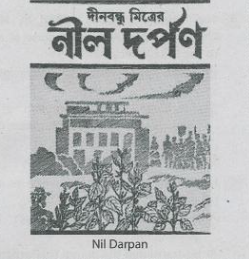
Question 13: In which year was the Vernacular Press Act passed?
Answer:
The Vernacular Press Act was passed in 1878.
Question 14: In which language was ‘Hindoo Patriot’ published?
Answer:
‘Hindoo Patriot’ was published in the English language.
Question 15: Who was Harish Chandra Mukhopadhyay?
Answer:
Harish Chandra Mukhopadhyay was a journalist and the editor of ‘Hindoo Patriot’.
Question 16: By what name was Harinath Majumdar known to the common people?
Answer:
Harinath Majumdar was known to the common people as ‘Kangal Harinath’.
Question 17: Which was the first newspaper published in Kolkata?
Answer:
Bengal Gazette was the first newspaper published in Kolkata.
Question 18: When and against whom did the Indigo rebellion break out?
Answer:
The indigo rebellion broke out in 1858-59 against the British indigo planters.
Question 19: When was the National Theatre established in Kolkata?
Answer:
The National Theatre was established in Kolkata in 1872.
Question 20: Who were the founders of the Baptist Mission at Serampore?
Answer:
William Carey, Marshman, and Ward were the founders of the Baptist Mission at Serampore.
Question 21: Name one of the founders of the Hindu College.
Answer:
One of the founders of the Hindu College was Sir Hyde East.
Question 22: Who was the founder of the Hare School?
Answer:
David Hare was the founder of the Hare School.
Question 23: Who founded the Calcutta Asiatic Society?
Answer:
William Jones founded the Calcutta Asiatic Society.
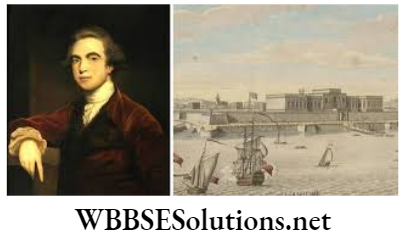
Question 24: In which year was the School Book Society founded?
Answer:
The School Book Society was founded in 1817.
Question 25: Who founded the School Book Society?
Answer:
The School Book Society was founded by David Hare.
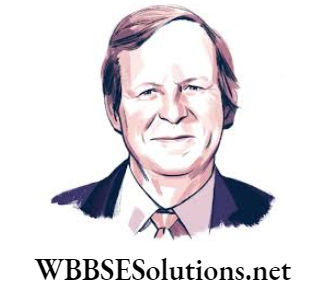
Question 26: Who founded the Calcutta Madrasa?
Answer:
The Calcutta Madrasa was founded by Warren Hastings.
Question 27: Name the college established by Iswar Chandra Vidyasagar.
Answer:
The college established by Iswar Chandra Vidyasagar was the Metropolitan College.
Question 28: Who founded the Calcutta Madrasa?
Answer:
The Calcutta Madrasa was founded by Warren Hastings.
Question 29: When was the Calcutta Madrasa founded?
Answer:
The Calcutta Madrasa was founded in 1781.
Class 10 History Wbbse
Question 30: Who founded the Hindu Female School (Bethune Girls’ School)?
Answer:
John Elliot Drinkwater Bethune founded the Hindu Female School (Bethune Girls’ School).
Question 31: Which Charter Act directed the Company’s government to spend one lakh rupees per year for spreading education among the Indians?
Answer:
The Charter Act of 1813 directed the Company’s government to spend one lakh rupees per year for spreading education among the Indians.
Question 32: Who was the first Indian Vice-Chancellor of Calcutta University?
Answer:
Sir Gurudas Bandopadhyay was the first Indian Vice-Chancellor of Calcutta University.
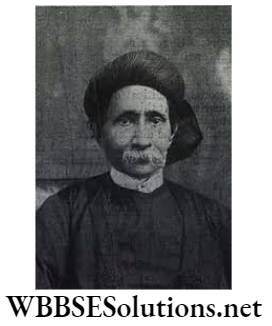
Question 33: Which two parties were involved in the controversy regarding the introduction of Western education in India?
Answer:
The two parties involved in the controversy regarding the introduction of Western education in India were the Anglicists and the Orientalists.
Question 34: In which year was Wood’s Despatch formulated?
Answer:
The year of the formulation of Wood’s Despatch was 1854.
Question 35: In which year was the Hunter Commission formed?
Answer:
The Hunter Commission was formed in 1882.
Question 36: In which year was the Science College established in Calcutta?
Answer:
The Science College was established in Calcutta in 1914.
Question 37: Who were the first lady graduates of Calcutta University?
Answer:
Kadambini Ganguly and Chandramukhi Basu were the first lady graduates of Calcutta University.
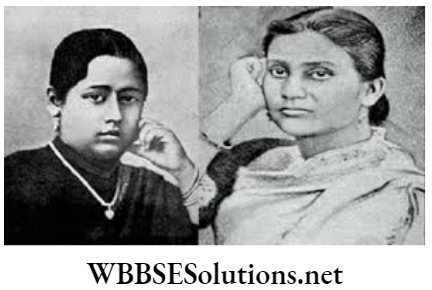
Question 38: Who assisted Madhusudan Gupta in his dissection of a human corpse?
Answer:
Raj Krishna Dey, Umacharan Sett, Dwarkanath Gooptu, and Nabin Chandra Mitra assisted Madhusudan Gupta in his dissection of a human corpse.
Class 10 History Wbbse
Question 39: In which year did Madhusudan Gupta dissect a human corpse?
Answer:
Madhusudan Gupta dissected a human corpse in 1836.
Question 40: Who was the first Indian to dissect a human corpse?
Answer:
Madhusudan Gupta was the first Indian to dissect a human corpse.
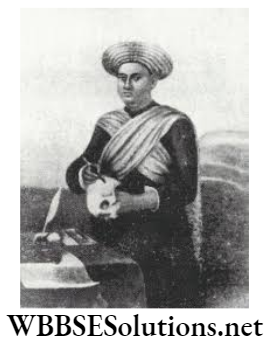
Question 41: When Madhusudan Gupta was the first Radio Physics Department opened at Calcutta University?
Answer:
In 1941, the first Radio Physics Department was opened at Calcutta University.
Question 42: Who were the Orientalists? Name two eminent orientalists.
Answer:
Orientalists were people who advocated the study of Asian culture and language. Two eminent orientalists were Princep and Colebrook.
Question 43: Name a journal published by the Brahmo Samaj.?
Answer:
A journal published by the Brahmo Samaj was ‘Sulabh Samachar’.
Question 44: Who was the founder of the Bharat Varshiya Brahmo Samaj?
Answer:
Keshab Chandra Sen was the founder of the Bharat Varshiya Brahmo Samaj.
Question 45: Name two newspapers published by Rammohan Roy.?
Answer:
Two newspapers published by Rammohan Roy were ‘Sambad Kaumudi’ and ‘Mirat-ul- Akhbar’.
Question 46: Name two leaders of the Brahmo Samaj.?
Answer:
Two leaders of the Brahmo Samaj were Debendranath Tagore and Keshab Chandra Sen.
Question 47: Name two journals published by the Derozians.?
Answer:
Two journals published by the Derozians were ‘Parthenon’ and ‘Bengal Spectator’.
Question 48: Who started the anti-sati movement?
Answer:
The anti-sati movement was started by Rammohan Roy.
Question 49: In which year was the sati system abolished?
Answer:
The sati system was abolished in 1829.
Question 50: Name the Governor-General who abolished the sati system.?
Answer:
Lord William Bentinck abolished the sati system.
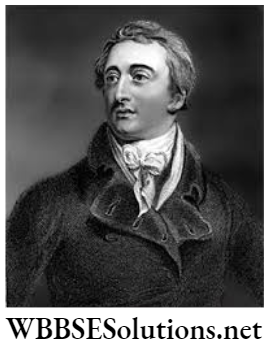
Question 51: Who started the Widow Remarriage Society and when?
Answer:
Vishnu Shastri Pandit started the Widow Remarriage Society in 1850.
Question 52: Who was the founder of Tattwabodhini Sabha?
Answer:
Debendranath Tagore was the founder of Tattwabodhini Sabha.
Question 53: Name two Derozians.?
Answer:
Two Derozians: Two Derozians were Ramtanu Lahiri and Krishna Mohan Banerjee.
Question 54: Who was the editor of the ‘Tattwabodhini Patrika’?
Answer:
Debendranath Tagore was the editor of the Tattwabodhini Patrika’.
Question 55: Who started a movement in favor of widow remarriage?
Answer:
Iswar Chandra Vidyasagar started a movement in favor of widow remarriage.
Question 56: Name two leaders of the Young Bengal Movement.?
Answer:
Two leaders of the Young Bengal Movement were Ram Gopal Ghose and Rasik Krishna Mallick.
Question 57: Name two social reformers who worked for the welfare of women.?
Answer:
Two social reformers who worked for the welfare of women were Rammohan Roy and Iswar Chandra Vidyasagar.
Question 58: Name two books written by Swami Vivekananda.?
Answer:
Two books written by Swami Vivekananda were ‘Bartaman Bharat’ and ‘Prachya-O- Paschatya’
Question 59: Who founded the Ramkrishna Mission?
Answer:
The Ramakrishna Mission was founded by Swami Vivekananda.
Question 60: Who uttered the famous doctrine ‘Yota mata tata path?
Answer:
Ramakrishna Paramhansa uttered the famous doctrine Yota mata tata path.
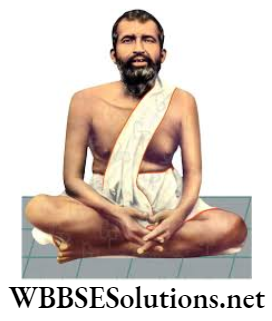
Question 61: In which year was the Widow Remarriage Act passed?
Answer:
The Widow Remarriage Act was passed in 1856.
Question 62: Who was Bijoy Krishna Goswami?
Answer:
Bijoy Krishna Goswami: Bijoy Krishna Goswami was a prominent social reformer and religious figure and incarnation of Mahaprabhu Sri Chaitanya in India during the British period.
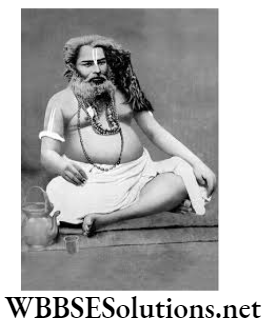
Question 63: Name one of the main representatives of Neo-Vedanta.
Answer:
Swami Vivekananda was one of the main representatives of Neo-Vedanta.
Question 64: Who was Haji Muhammad Mohsin?
Answer:
Haji Muhammad Mohsin: Haji Muhammad Mohsin was a prominent philanthropist in Bengal.
Question 65: Who was Lalon Fakir?
Answer:
Lalon Fakir: Lalon Fakir was a Bengali Baul saint, songwriter, thinker, and social reformer.
Question 66: Who wrote Anandamath?
Answer:
Anandamath: Anandamath was written by Bankim Chandra Chattopadhyay.
Question 67: Where did the Renaissance first start in Europe?
Answer: The Renaissance first started in Italy.
Question 68: Which century of Bengal is known as the ‘Century of Renaissance’?
Answer:
The 19th century is known as the ‘Century of Renaissance’ in Bengal.
Question 68: Name some personalities who played important roles in the Bengal Renaissance.?
Answer:
Some personalities who played important roles in the Bengal Renaissance are Rammohan Roy, Iswar Chandra Vidyasagar, Keshab Chandra Sen, Debendranath Tagore, etc.
Question 69: Name some scientists of the Renaissance period in Bengal.?
Answer:
Some scientists of the Renaissance period in Bengal were Anil Kumar Gain, Satyendranath Bose, Jagadish Chandra Bose, and Prafulla Chandra Roy.
Question 70: Name the personalities who accepted 19th-century Bengal as the period of the Renaissance.
Answer:
Some personalities who accepted the 19th century as the period of the Bengal Renaissance is Asok Mitra, Binoy Ghosh, Dr. Barun De, Dr. Sumit Sarkar, Suprakash Raj, etc.

